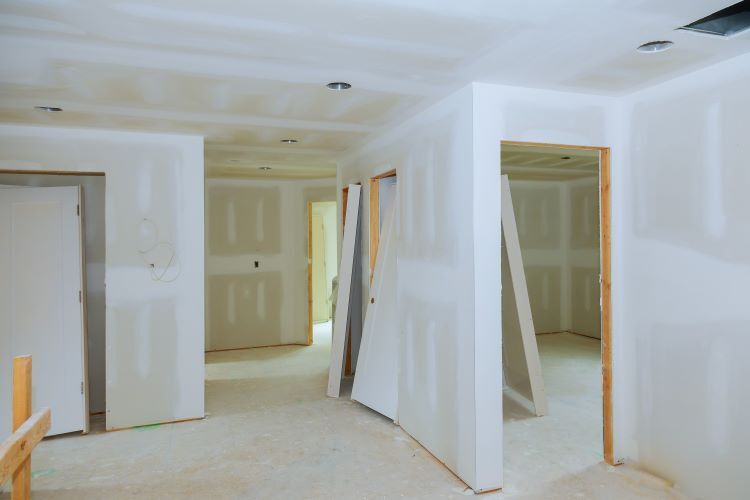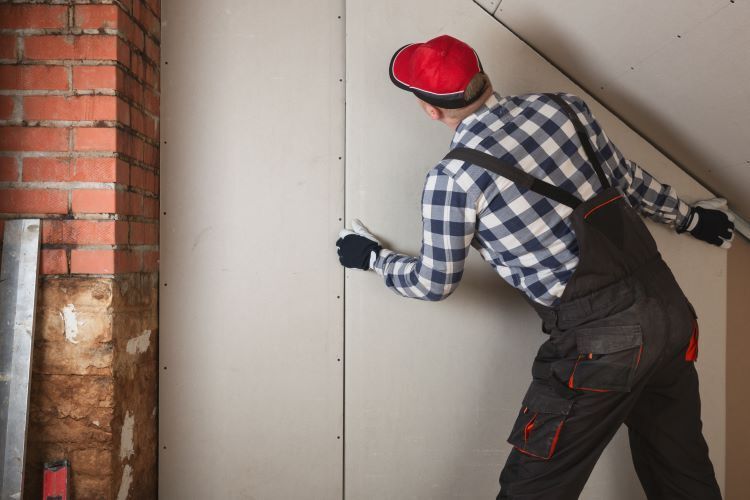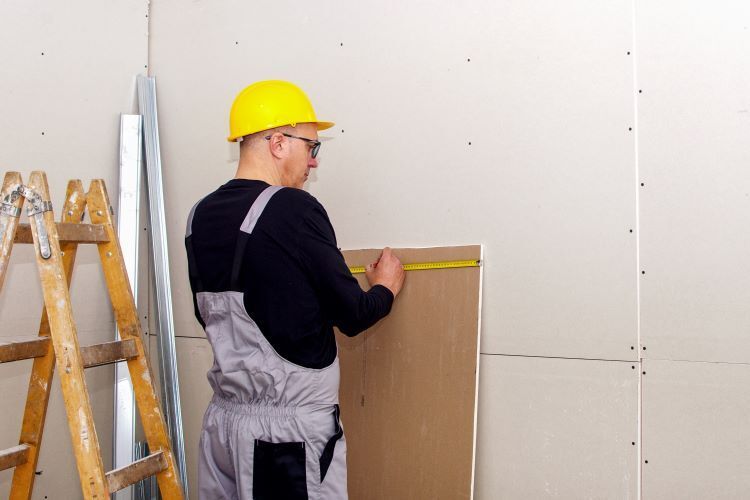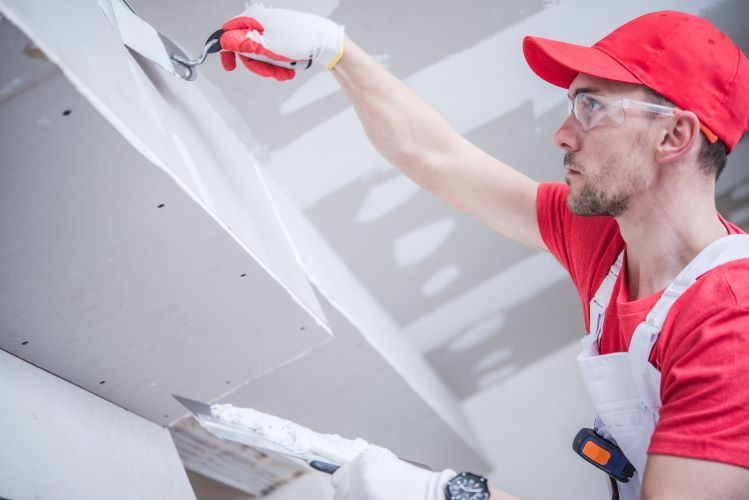Keeping Your Drywall Mold-Free: Tips for Prevention

Mold can be a serious problem for any home or business, and one area that is especially vulnerable to mold growth is drywall. Drywall, which is commonly used in interior walls and ceilings, can easily absorb moisture, creating the perfect environment for mold to thrive. At Barrie Drywallers, we know how crucial it is to protect your drywall from mold damage, especially in the humid climate of Barrie, Ontario. In this blog, we’ll share some essential tips for preventing mold on your drywall and keeping your home safe and healthy.
Why Does Drywall Attract Mold?
Drywall, or gypsum board, is made from a core of gypsum plaster between two layers of paper. While drywall is a durable and versatile building material, its paper-based surface is prone to absorbing moisture. In damp or poorly ventilated areas, this moisture can lead to the growth of mold, a type of fungus that spreads rapidly and can cause health issues like allergies, respiratory problems, and asthma.
Mold can start growing on drywall within 24 to 48 hours of moisture exposure, making it essential to prevent damp conditions. Whether from leaks, high humidity, or condensation, keeping moisture out of your drywall is key to maintaining a mold-free environment.
How to Keep Drywall Mold-Free: Prevention Tips
The best way to deal with mold is to prevent it from developing in the first place. Here are some practical steps you can take to keep your drywall mold-free:
1. Control Indoor Humidity Levels
Humidity is one of the primary culprits behind mold growth. When indoor humidity levels are high, moisture can settle on your drywall, leading to mold issues. Keeping the humidity in check is a crucial step in mold prevention.
Tips to reduce humidity:
- Use a dehumidifier: Especially in humid areas like basements, using a dehumidifier can help control the moisture in the air and keep humidity levels below 60%.
- Ventilation: Proper ventilation in bathrooms, kitchens, and laundry rooms is key to preventing moisture buildup. Make sure to use exhaust fans when cooking, showering, or doing laundry.
- Open windows: On drier days, open your windows to allow fresh air to circulate, reducing the chances of mold growth.
2. Address Leaks Immediately
Leaks from pipes, roofs, or windows are a common source of moisture that can quickly lead to mold growth on drywall. If you spot any leaks or water damage, it’s important to address them right away.
Steps to prevent mold from leaks:
- Inspect regularly: Check for signs of leaks in areas prone to moisture, such as near sinks, tubs, and windows. Also, check your roof and gutters to ensure they are not leaking water into the walls.
- Fix leaks promptly: As soon as you notice any leaks, repair them immediately to prevent water from seeping into the drywall.
- Seal windows and doors: Ensure your windows and doors are properly sealed to prevent water from getting into the walls during storms or heavy rainfall.
3. Use Mold-Resistant Drywall
In areas with high moisture levels, like basements, bathrooms, or laundry rooms, consider installing mold-resistant drywall. Mold-resistant drywall is specifically designed to repel moisture and reduce the chances of mold growth.
Types of mold-resistant drywall:
- Paperless drywall: Instead of using paper, this type of drywall has a fiberglass surface that is less likely to absorb moisture, making it more resistant to mold.
- Moisture-resistant drywall (green board): This drywall has a moisture-resistant core and is often used in high-humidity areas like bathrooms and basements.
4. Ensure Proper Insulation and Vapor Barriers
Condensation can also lead to moisture buildup on drywall, especially in cold climates like Barrie’s. When warm, humid air comes into contact with cold surfaces, it can cause condensation, which can then lead to mold growth.
How to prevent condensation issues:
- Proper insulation: Ensure that your walls, especially exterior walls, are properly insulated to prevent warm air from hitting cold surfaces and creating condensation.
- Vapor barriers: Install vapor barriers behind the drywall to reduce moisture penetration from outside. This can be particularly important in basements or other areas that are prone to dampness.
5. Regular Maintenance and Inspections
Regular inspections and maintenance of your drywall and surrounding areas can help you catch potential mold issues before they become serious problems.
Maintenance tips:
- Inspect walls for water stains: Water stains on your walls can indicate a moisture problem. If you notice any discoloration or peeling paint, it could be a sign of water damage behind the drywall.
- Keep an eye on grout and caulking: In bathrooms and kitchens, ensure that the grout and caulking around tiles, sinks, and bathtubs are intact to prevent water from seeping into the walls.
- Clean regularly: Keeping your home clean and free of dust and debris can help reduce the chance of mold growth. Mold spores can settle in dust, and by keeping your home clean, you can reduce the number of spores that could potentially land on your drywall.
6. Act Quickly After Water Damage
In the event of flooding or water damage, it's crucial to act fast to prevent mold from taking hold on your drywall. Mold can start growing within 24 to 48 hours after drywall becomes wet, so quick action is essential.
Steps to take after water damage:
- Remove moisture immediately: Use fans, dehumidifiers, and wet vacuums to dry out the affected area as quickly as possible.
- Cut out water-damaged drywall: If your drywall has been saturated with water, it’s best to cut out and replace the affected section to prevent mold from growing inside the walls.
- Disinfect the area: Clean the surrounding area with a mold-killing solution to ensure that any lingering spores are eliminated.
Conclusion: Protect Your Drywall from Mold
Mold can pose a serious threat to your home, your health, and your drywall. By taking preventive measures such as controlling humidity, fixing leaks, using mold-resistant drywall, and properly insulating your walls, you can significantly reduce the risk of mold growth.
At Barrie Drywallers, we understand how important it is to keep your drywall mold-free and in top condition. If you need help with drywall installation, repair, or mold prevention, we’re here to provide expert solutions for your home or business. Contact us today to learn more about how we can help you protect your drywall and maintain a healthy, mold-free environment in your home.
You Might Also Enjoy:



Contact Us!
